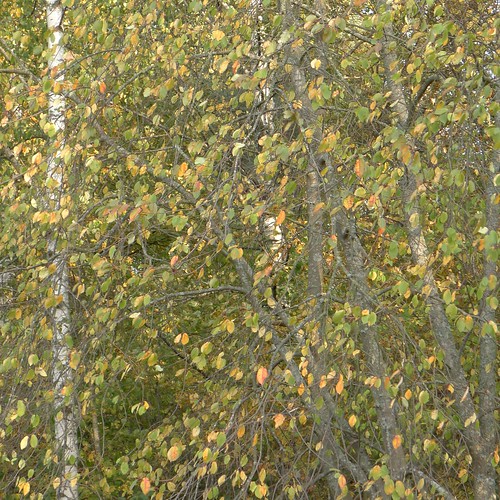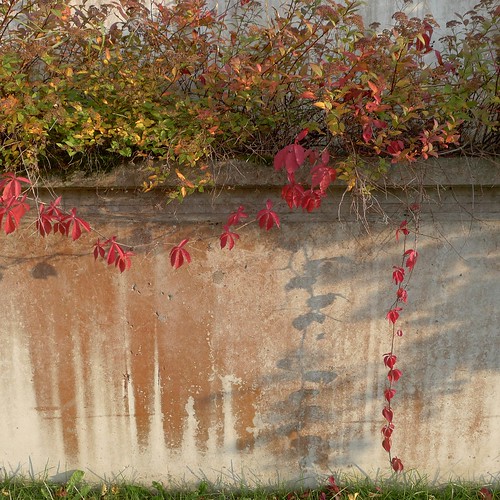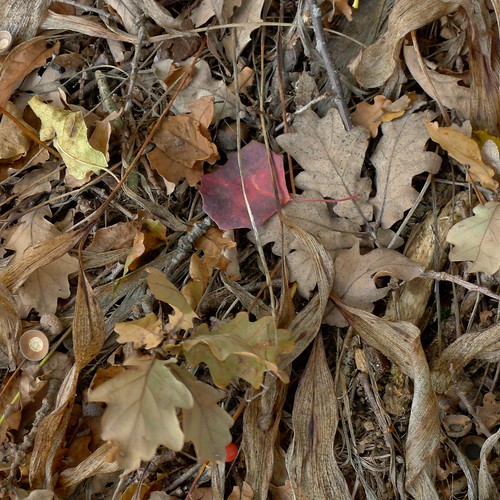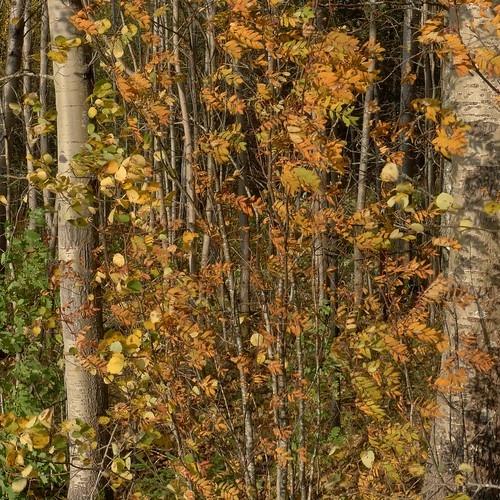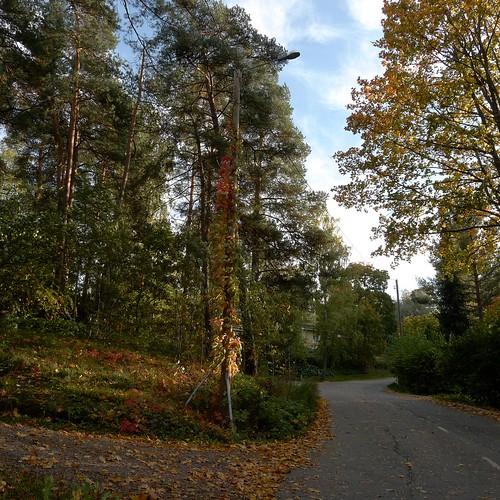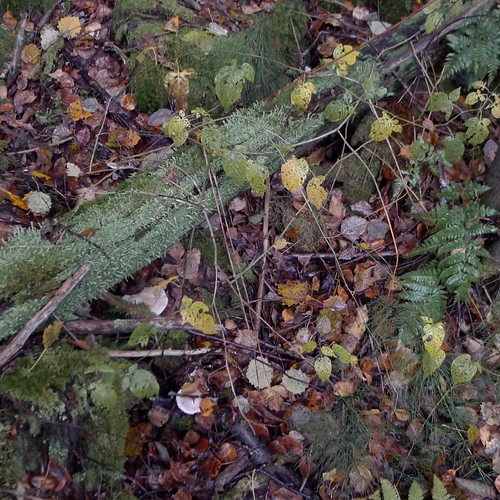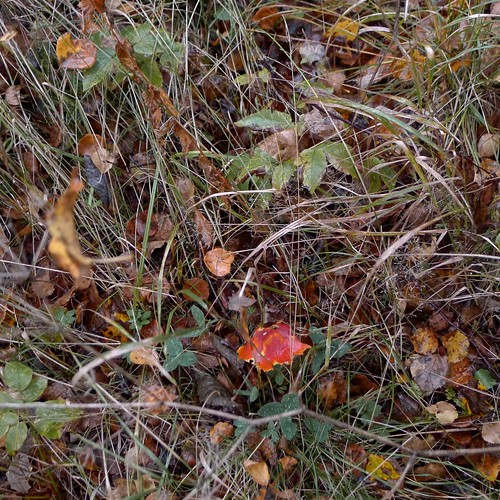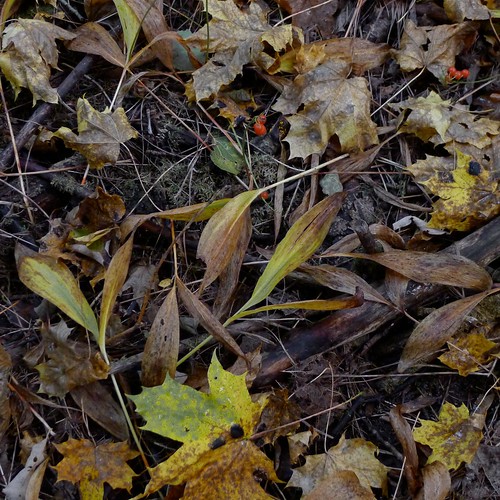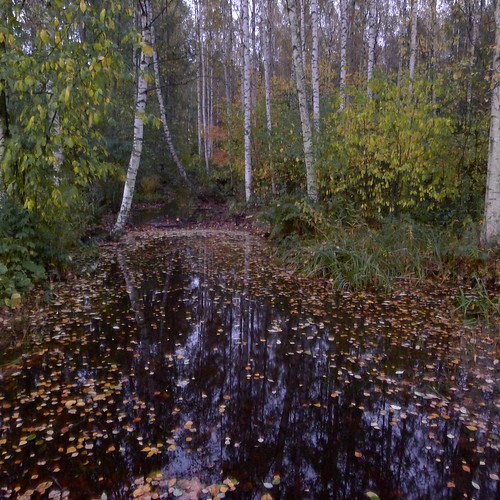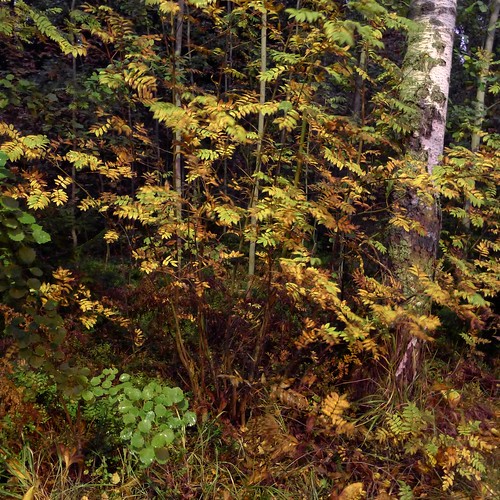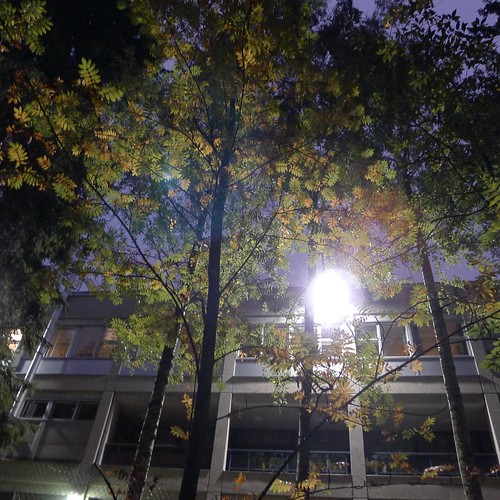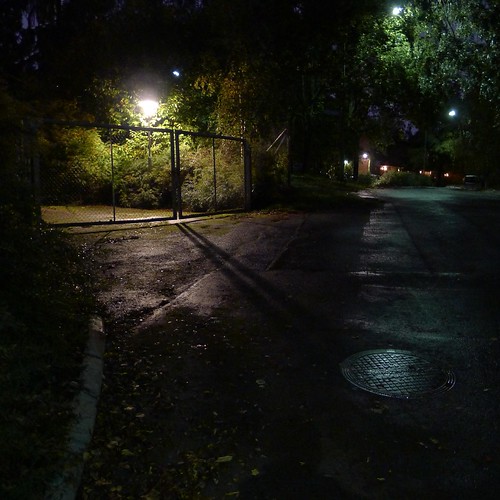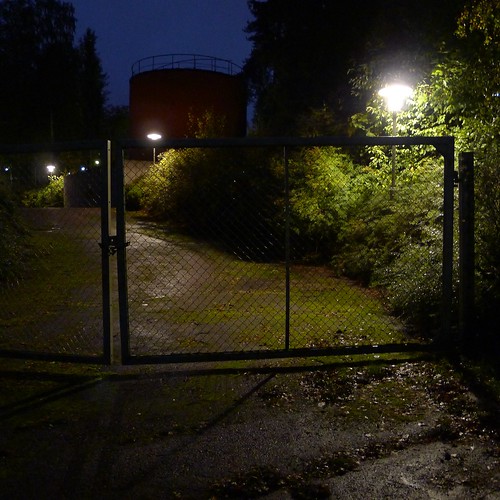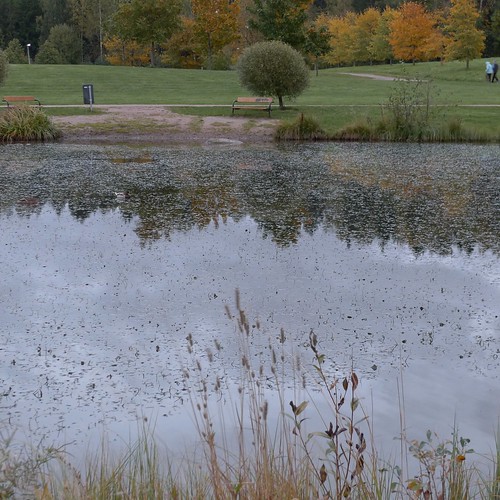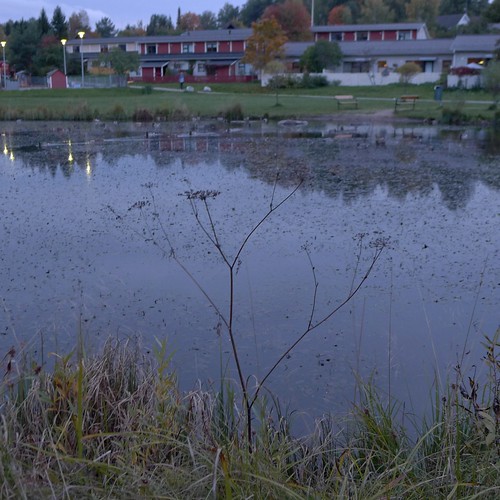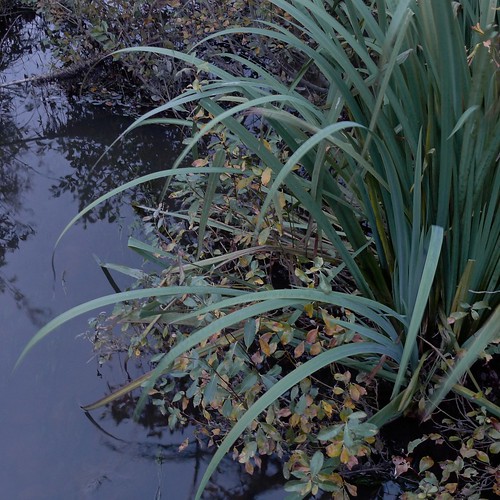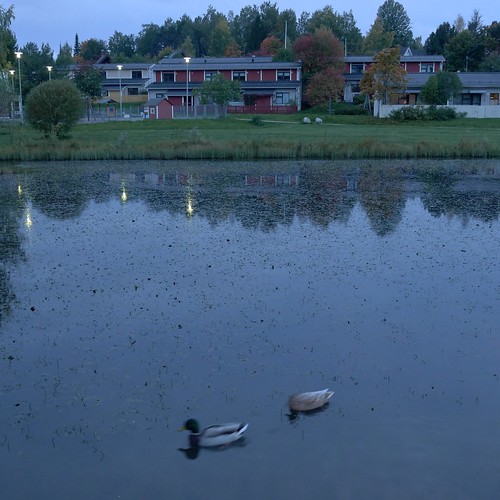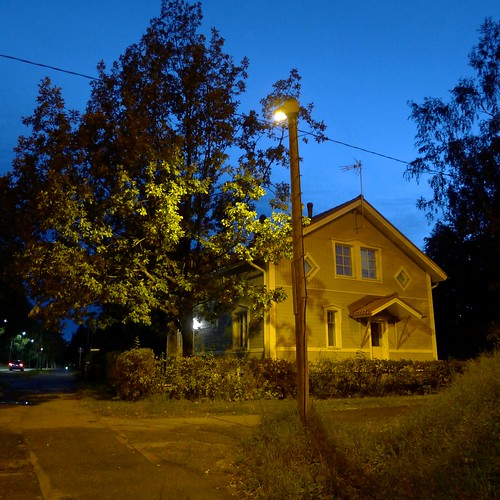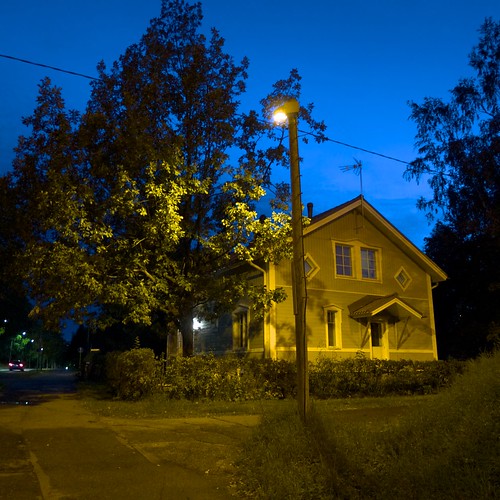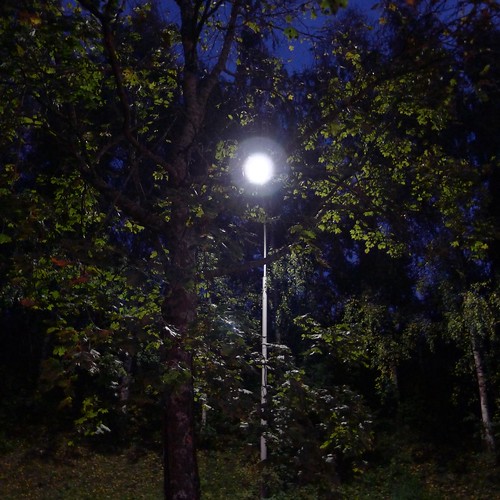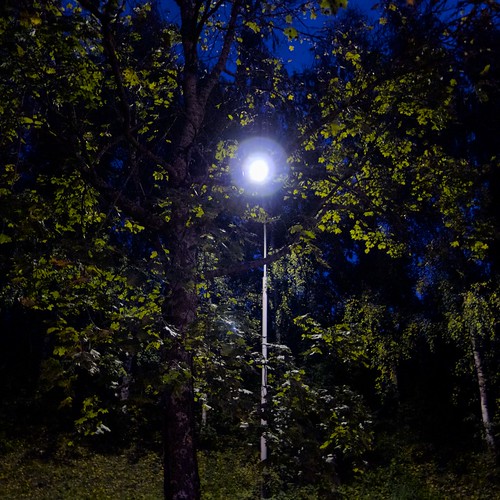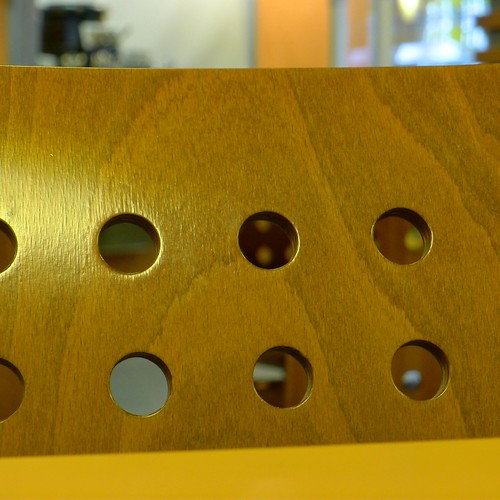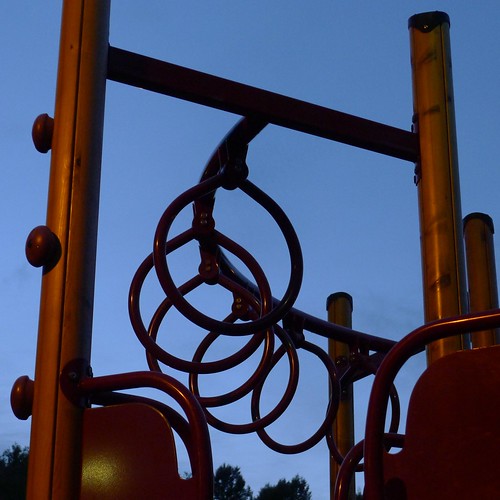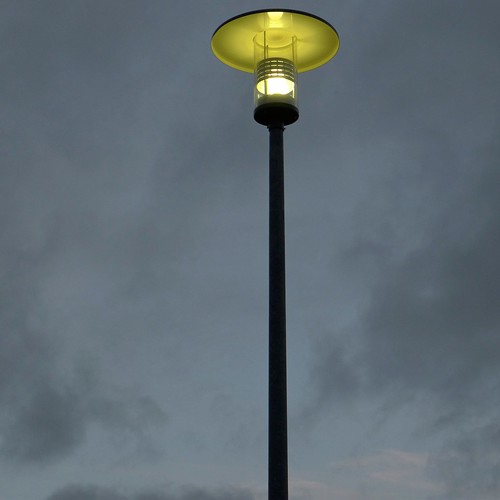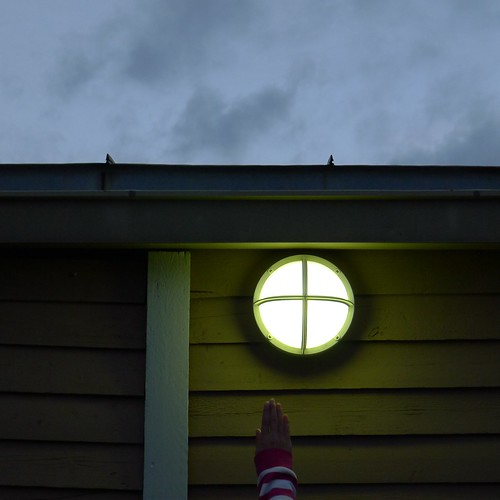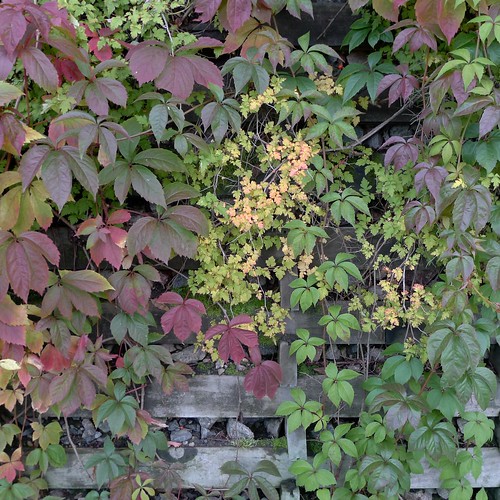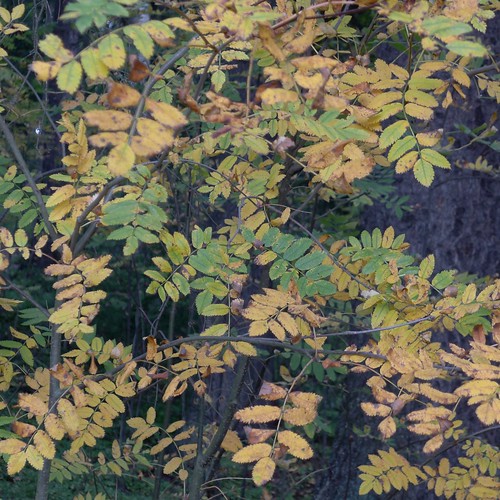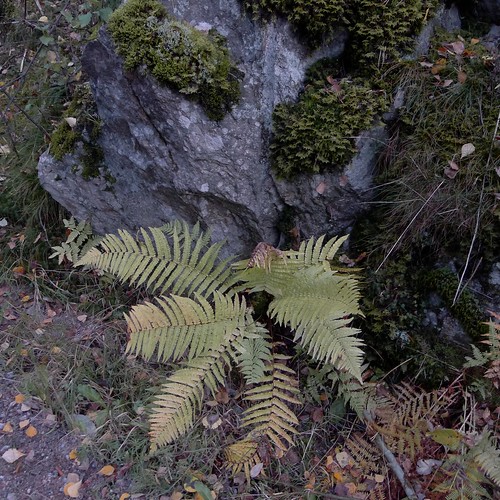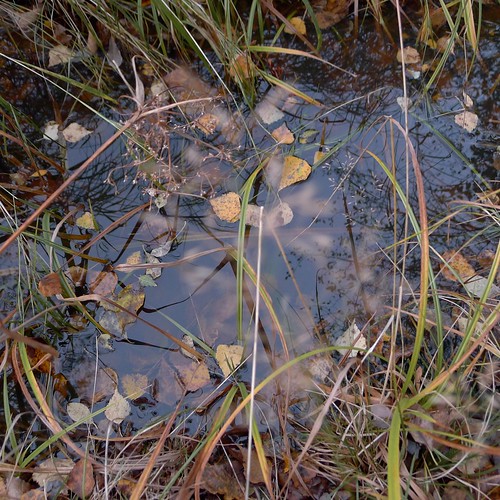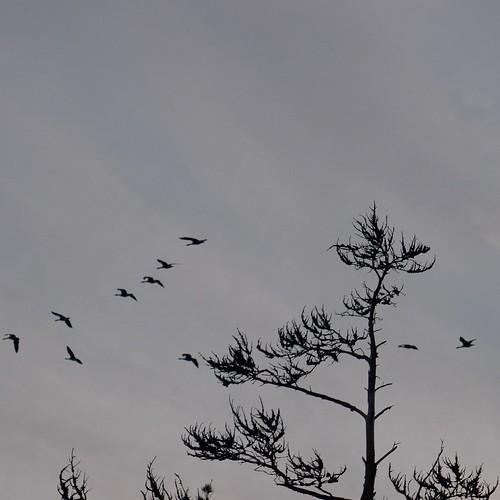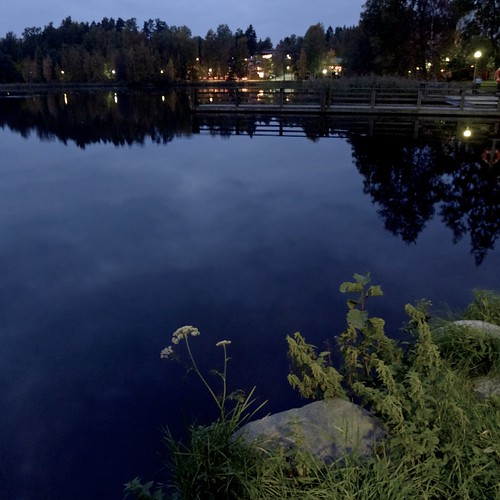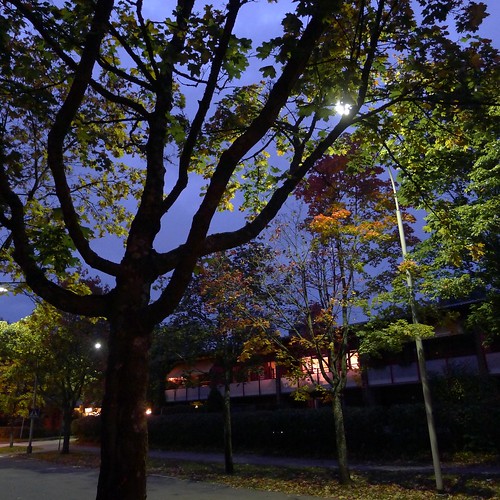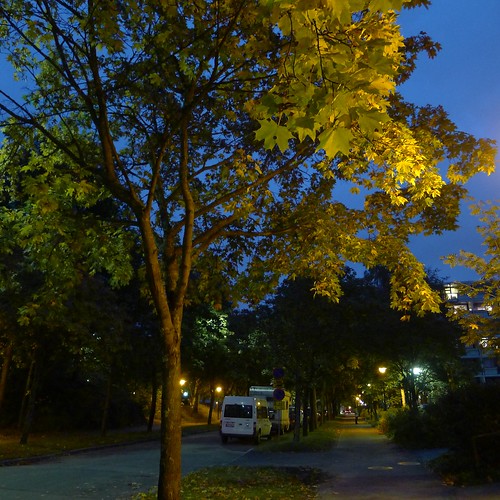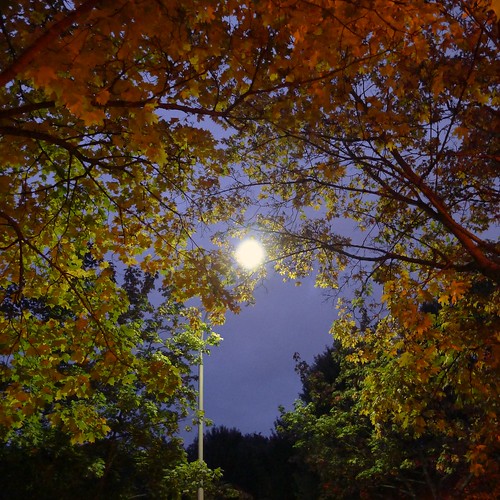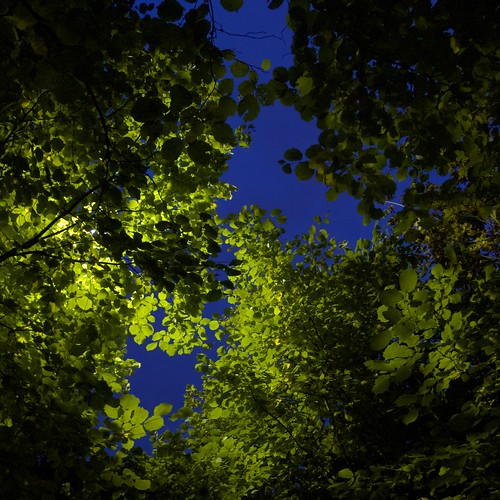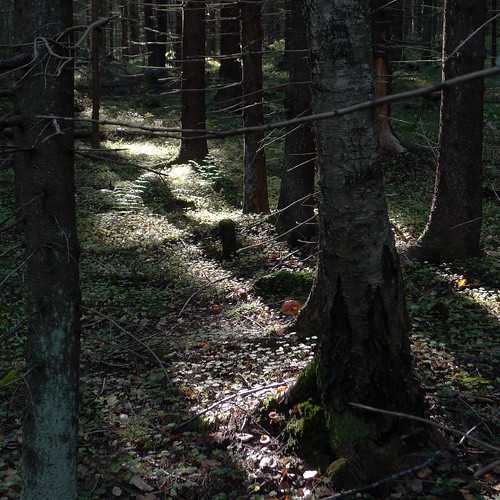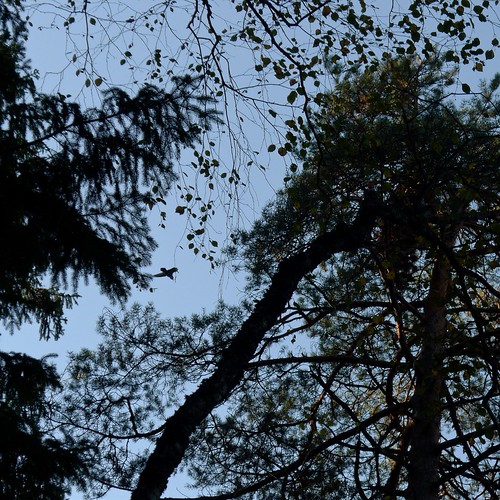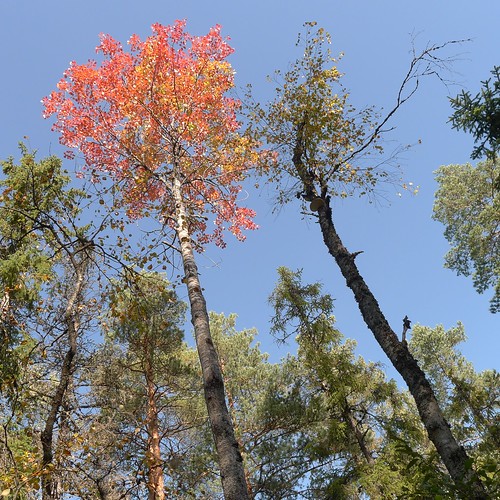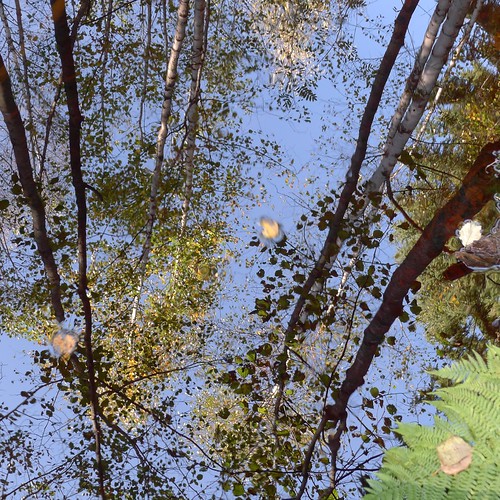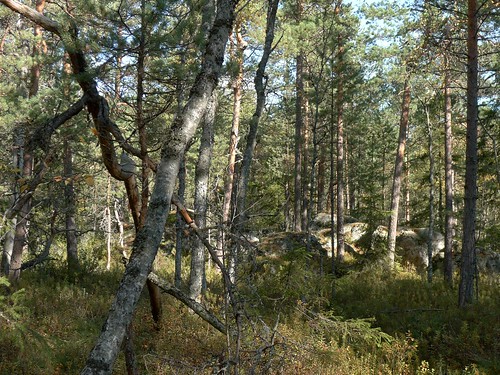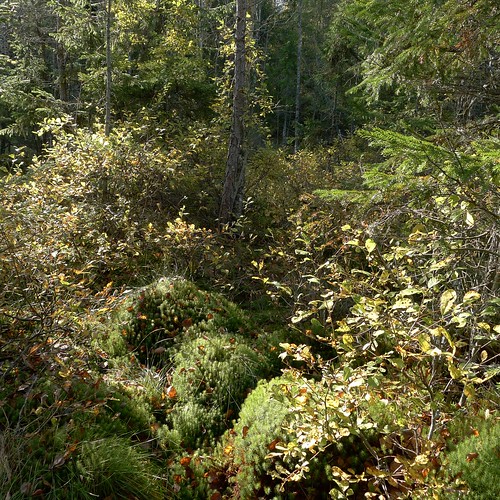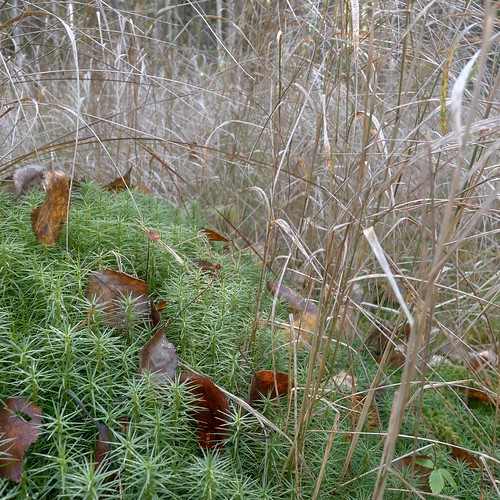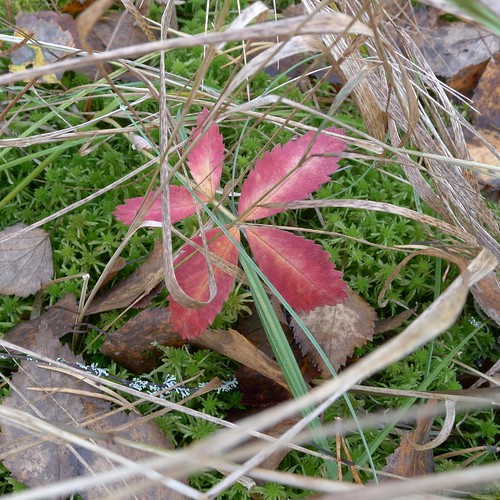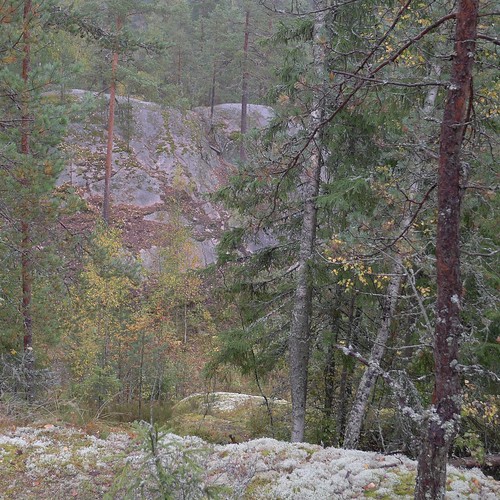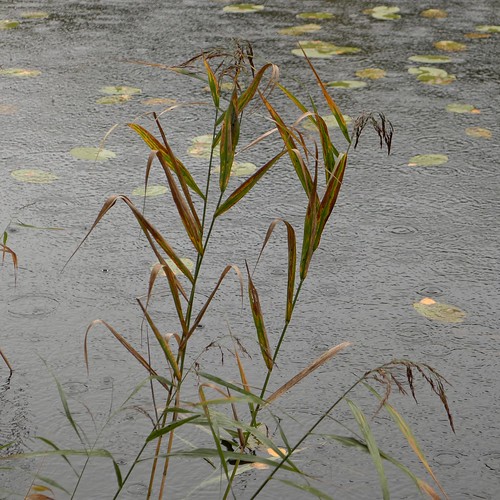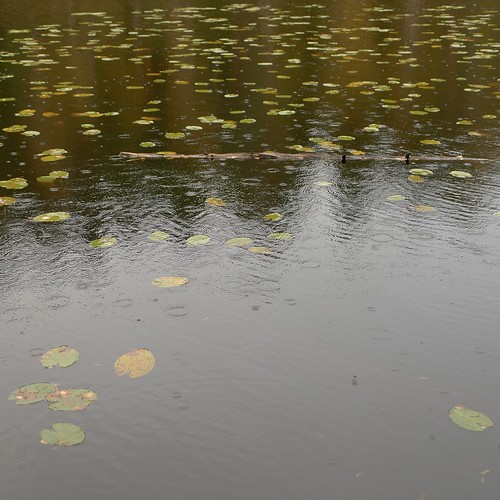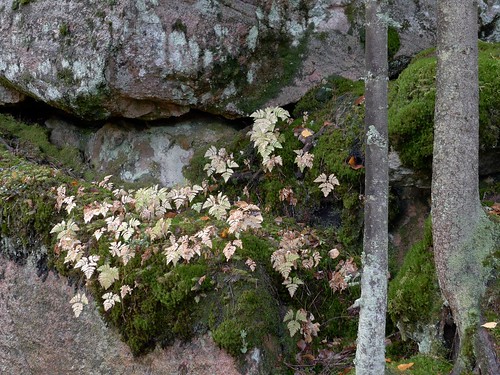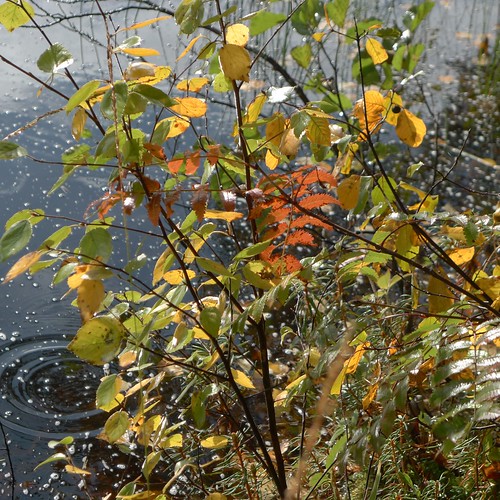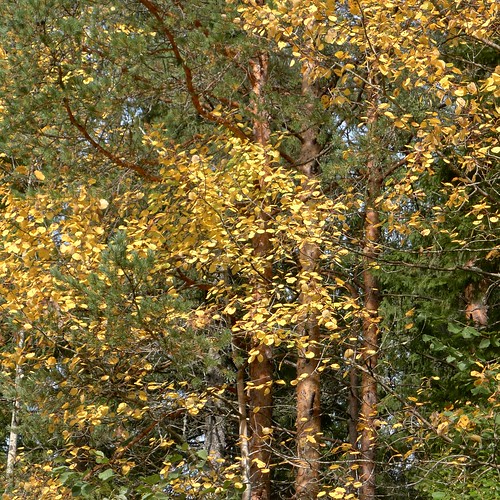You are writing excellent comments, and I'm often quite at loss on how to answer them. Yesterday Francesco asked: "[R]epetition and predictability of results are not in contradiction?"
I think there is a kind of contradiction, and in fact this question made me ponder for a long while what it is that is really happening when I'm taking photographs. Even though I take on average about 200 photographs each day - and in the last two months I have taken more than that, over 20 000 photographs in all - most of these photographs are in fact taken in clusters.
Namely, I stop to take photographs, and then I take several in quick succession, which means anything between 1-10 photographs within ten seconds of so. And all this time I try not to think about taking photographs, just drop in the flow and let the photographs happen.
It often doesn't go that smoothly, but sometimes it does, and this is in fact quite an enjoyable feeling, a bit like connecting to the world on some fundamental level below conscious thinking.
Thus, going for a walk and taking photographs is a way of pressing a "pause" button in the head. This may be why I feel so attracted to it.
As so many people these days, at work I'm dealing with highly abstract concepts, such as "what are the key policy issues related to cloud-based service delivery for higher education institutions".
In fact, it is worrisome that I can easily generate such phrases but have difficulties remembering the English names of common trees.
What is problematic about such conceptualization is that it is extremely hard to switch off the machine that goes on and on in the head. You are almost never connected to now; instead, you categorize, classify and objectify.
But here I have found that photography helps. At least it happens more or less every day that I can have long moments when there are no concepts running around in my head. Instead of abstract speculation, I'm perceiving the world.
And after going for a walk and taking some photographs, I feel much calmer. The machine is not stopped, but it is better controlled.
I'm not sure whether this answered the question or went completely off-topic. But for me it was a good question.
Friday, September 30, 2011
How to stop conceptualization
Thursday, September 29, 2011
The two best things about LX5 firmware 2.0
Yesterday I wrote that I tried to get the same result from RAW files as from the JPEGs from the camera. Andreas quite rightly questioned this: "You're competing with a mindless algorithm. I see no reason why it should be right."
What I really meant was consistency - that when I take a photograph I can know in advance how it will turn out. And I don't mean know in the rational sense, I mean deep down gut feeling, seeing how the photograph will turn out.
And thus I don't like a workflow that relies on creativity at post-processing stage. I want the result to be as predictable as possible. My theory is that only this way it is possible to learn an instinctive approach to photography, aiming and shooting without thinking at all.
So, I will take an mindless algorithm any day if it generates good enough quality with reasonable predictability.
Yesterday I wrote about the book The Practice of Contemplative Photography: Seeing the World with Fresh Eyes by Andy Karr and Michael Wood (Shambhala, 2011). The authors are also of similar opinion: to learn this style of photography, one must make things as simple as possible. So, don't rely on post-processing, and don't fiddle with the camera when you are taking a photograph. Don't think. It is only before and after taking a photograph when one should think.
I mentioned yesterday that my approach is a bit different that what Karr and Wood suggest. Instead of relying on those moments when the mind enters the moment of now - when perception takes over - I rely on a much simpler thing: repetition. And I really mean repetition.
However, sometimes repetition gets a bit excessive, even for me. Yesterday I took 499 photographs. Today: 365. I think reading the book may have contributed to this excession.
Repetition and simplicity, those are the basics of my approach. It may be a strange way of taking photographs, but it is mine, and I have grown into it.
You should't emulate it. Everyone has their own steps to follow.
But lets return to ground from this abstract conceptualization, to discuss the gritty details.
Today I switched away from RAW+JPEG and generated JPEGs only while shooting at ISO 500. I was at the limit of handheld shooting: the photograph titled Wet was taken at f/2.0, ISO 500, 0.8 s. It it remarkable what you can do with the LX5.
I have grown to appreciate the LX5, and the firmware version 2.0.
The two best things - compared to the LX3 - are 1) fast focusing in darker conditions and 2) reasonably consistent white balance.
With the LX3 I switched over to manual focusing, usually hyperfocal, when it got darker. But with the LX5 I haven't needed manual focusing at all. When it starts getting dark the camera is a little bit slower than in daytime, but not much worse. This is really a blessing.
In addition the LX5 seems to be more consistent than the LX3 when there are various artificial light sources in addition to natural light. With the LX3 you never knew what it would do next. But the LX5 seems more robust in this sense. I don't always like what I'm getting, but at least there are less occasions to be surprised by the results.
Wednesday, September 28, 2011
Pond at sunset
Here is the last (and third) posting for today. I went for a two-hour walk with the children, to a nearby pond, at sunset time. I love ponds, as you probably have learned already.
Experimenting at ISO 500 - JPEG vs. RAW
As I mentioned earlier, I'm having some difficulties in developing RAW files taken when darkness creeps in. My previous Aperture preset for RAW post-processing was inappropriate, and thus I need to do some experiments in this.
Here are two comparison pairs, shot at ISO 500. The RAW files were processed with Topaz DeNoise using the RAW light setting, and then I applied a new RAW present to the result. I'm unable to get exactly the same result as with the JPEG from the camera, but with this type of photographs there is not one "right" version, because of the difficulties in deciding on the correct color temperature etc.
Developing and processing RAW files is more work that just using the JPEGs from camera. I'm not quite sure whether using RAW is worth the effort. What do you think?
Seeing color
I have been thinking about the book The Practice of Contemplative Photography: Seeing the World with Fresh Eyes by Andy Karr and Michael Wood (Shambhala, 2011). Of course, thinking is exactly the wrong thing to do, as the point of the book is to stop thinking with concepts, and instead perceive the world as it is, directly.
I like this book, it is so different from most books on photography, especially the how-to guides and the innnumerable recipies book.
While walking today I every now and then tried the first exercise in the book, which was about color, or more precisely, about seeing color. The idea is contemplative photography is "you can think before and after taking a photograph, not during it".
The photographs shown above were taken with "seeing color" in mind (or, as it should have been, out of mind).
So, focus, stop the conceptualization process ("It is getting cold", "What should we have for dinner tomorrow", "This is going to be a great photograph", ...), and then allow perception to take over while taking the photograph. See the world by being in the moment, don't give names to things, get rid of words - and instead embrace the direct experience of the moment.
The photographs in the book are rather simple, but often such that stop you in the tracks. I think Karr and Wood have practiced what they preach - and they don't really preach, but show how one can use photography as a way to see the world as it is.
My approach to photography is rather similar to what Karr and Wood demonstrate in the book, but there are also differences, and I was quite happy about this, as I thought that at least I have a little bit originality in my approach.
One of the things Karr and Wood suggest is to not use nature as a subject matter in the seeing color exercise (and also otherwise), because people get too fascinated by the "beauty" of nature, and are thus unable to stop the conceptualization. I don't really agree with this, as I have found it quite easy to stop thinking while taking photographs of natural subjects. But maybe it is not so for everyone.
Another thing which I do rather differently is the idea of taking notice of those moments when a sense of direct experience happens, when you stop pondering and live in the current moment. I haven't really approached my photography this way. Instead I use repetion. That is, I take a lot of photographs, and after a while I usually get into the flow, and start seeing, and stop (at least for some moments) the chatter that goes on in the head most of the time.
But in any case, I think this book is wonderful, and I have a lot of it still to be read, and a lot of avenues to explore.
So far the most surprising thing is how little nature photographs there are in the book - mostly man-made things, with some bits of nature (for example fallen leaves) thrown in. So I wonder: Is it really so hard to practice contemplative photography with nature as the subject?
Tuesday, September 27, 2011
Slipping
Today I slipped on some wet rocks and fell, getting my hand cut somewhat and a little bit of bruises as well. Have to be careful. At least the LX5 survived the fall intact, it is a robust tool.
Monday, September 26, 2011
Reading tanka poems and pondering darkness
Today I was reading a collection of tanka poems, translated into Finnish by Tuomas Anhava during 1960-1982. Even though the Japanese originals are impossible to fully translate, Anhava (who is a poet) has managed to make the translations into works of art.
Some tanka poems are such that they almost feel like photographs. Perhaps this type of poetry is the closest words can come to the art of photography?
We organized today a birthday party, and thus I was unable to go for a walk until it started to get dark. Here is a selection of nightly photographs, most are processed from RAW files.
While working with the RAW files I noticed that my standard preset for RAW conversion doesn't work too well with night-time photographs, so there is some experimentation (and learning) to be done.
Sunday, September 25, 2011
It ends with a recipe
Today we had sunshine, and it was a great opporturnity for a long walk: past the bog at Tremanskärr, across some rocky forests to Stavurkärr swamp, then climbing up a rocky hillside to a smaller and drier swamp, and then to Kurkijärvi lake.
By the way, I'm having trouble naming different swamp types in English. For example, the third swamp I mentioned above is "räme" in Finnish. This is an English translation: "boreal swamp type characterized by sparse growth of pine, thick layer of sphagnum on the ground and dense growth of woody shrubs".
I didn't even know the word sphagnum and had to look it up: "a genus of between 151 and 350 species of mosses commonly called peat moss, due to its prevalence in peat bogs and mires".
It is much simpler to say "räme" in Finnish...
Today I got disappointed with yet another book on photography. This time I had been reading David Taylor's Digital Black & White Photography (Ammonite Press, 2011). As so often, this book consists of short recipies, most of which were only one or two pages long. For example, the recipies about histograms and metering were well written, but all too short for my taste. I would like to know more.
A typical oversight in most books on photography is the handling of camera aperture. The f-stop range is given to the reader, often without any explanation where the numbers come from and how they are related to the amount of light passing through.
And the related topic of depth-of-field (DOF) is hardly described at all, except by saying that a small f-stop number means shallower DOF. But why? That is a question I hardly ever see answered, even though the answer is not complicated, just a little bit of elementary geometry.
Am I alone wanting to know the reason why something happens? Or is everyone just too busy to think about reasons these days?
I have started to think that giving recipies without going deeper is the prevalent trend today, whatever the topic: economy, politics, sports, entertainment, science, technology. Just recipies, with a lot of facts, but no explanation - and not even an attempt at questioning - why things work as they do.
... We live in a cookbook society.
This is the final stanza of The Hollow Men by T. S. Eliot:
This is the way the world ends This is the way the world ends This is the way the world ends Not with a bang but a whimper.
I have started to think that the essential content of that whimper may be recipe, so I might write "Not with a bang but with a recipe". I know, this is not as poetic as whimper, but I don't care.
Saturday, September 24, 2011
Writing with light
I'm currently reading a book about b&w photography, where I was reminded of what photography means. It is put together from the Greek words photos (ϕοτοσ), meaning light, and graphos (γραοσ), meaning writing, delineation, or painting.
Sometimes I don't feel much interest in taking photographs, but I get going nevertheless. The weather forecast promised nice weather for today, but it rained most of the time while I was out walking.
